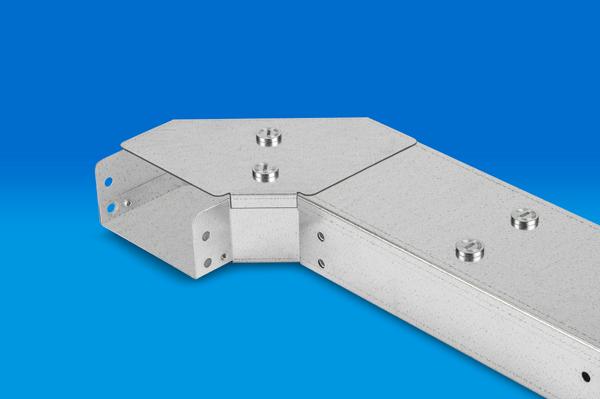Regulation 521.10.1
Regulation 521.10.1 of BS 7671 requires that non-sheathed cables (ie. ‘singles’) for fixed wiring can only be installed in cable trunking if the trunking provides at least the degree of protection IPXXD or IP4X and if the cover can only be removed by means of a tool or a deliberate action. (See the regulation for the precise wording.)
A couple of obvious questions are: Does trunking bought off the shelf comply with either of these two ratings? What is the difference between IPXXD and IP4X?
BS EN 50085
The standard for cable trunking systems is BS EN 50085, Cable trunking and cable ducting systems for electrical installations and, although this standard does not state an IP rating, it does require each manufacturer to declare what their IP rating is. Traditionally, trunking is rated at IP30 – a less robust standard than either IPXXD or IP4X – although some manufacturers offer alternative ranges which comply with either IPXXD or IP4X. Consequently, trunking which is bought, ‘off the shelf’ may not comply with Regulation 521.10.1.
BS EN 50085-1:2005 states in paragraph 6.71: ‘According to protection against ingress of solid foreign objects, IP4X or any higher degree of protection shall not be declared when it relies on butt joint or the accuracy of cutting of ducting lengths or trunking lengths or access covers without providing relevant fittings or assembly means or additional factory prefabricated sealing means’.
Consequently, BS EN 50085 has effectively rendered butt joints non-compliant with IP4X.
The IP Code
Table 1 shows the format of the IP Code.
Table 1 – The IP Code

Where the second number does not need to be specified, it can be replaced by the letter, ‘X’ (as in IP4X) or by, ‘XX’ if both numbers are unspecified (as in IPXXD). The additional letter and/or the supplementary letters can be omitted without replacement. Where more than one supplementary letter is used, they are placed in alphabetical order.
Comparing IPXXD with IP4X
Careful comparison of the ratings IPXXD and IP4X shows that, while they are similar, they are not equally robust.
Table 2 gives the basic requirement of the IPXXD rating.
Table 2 – IP code additional letters

The IPXXD rating indicates that there is no classification for protection against access to hazardous parts inside enclosures and ingress of water (this does not mean there is not some protection) but that protection is provided against unintentional access to live parts with a wire of minimum diameter 1.0mm and 100mm in length.
IPXXD does allow objects to enter the trunking but protects by distance (100 mm) by means of an internal shield or barrier.
The IP4X rating can be understood by reference to Table 3.
Table 3 – IP code numbers

The IP4X rating means that protection to persons and equipment is provided by testing with a 1.0mm diameter probe to ensure that it will not penetrate the trunking at, for example, points where the trunking has been joined. No protection is provided against water splashing from any direction.
IP4X protects the cables in the trunking not only against the ingress of a 1.0mm diameter wire or greater but also against solid foreign objects (eg. debris) which could damage the cables inside.
Consequently, the IP4X rating provides greater protection than the IPXXD rating and must be regarded as the standard for best practice.
Upgrading to IP4X
Regulation 521.10.1 has a Note which states: ‘For a cable trunking system to meet IP4X requirements, IP4X trunking and related system components would need to be installed. If a system includes site-fabricated joints, the installer must confirm that the completed item meets at least the degree of protection IPXXD’.
However, trunking and accessories that achieve IP4X compliance has, thus far, been somewhat limited in the range that is generally available from distributors as standard stock.
This may change but, in the meantime, a solution is available in the form of clips or cover straps which can easily be fitted to standard trunking and accessories to provide IP4X protection. When joining straight lengths of trunking for example, these clips or cover straps are connected to each coupler over the joint between two lids. They should prove to be an ideal solution for new installations and also for retrofit projects, where older trunking systems are to be upgraded.
Conclusion
It cannot be assumed that cable trunking which has been bought off the shelf complies with either IPXXD or IP4X. This must be checked with the trunking manufacturer. If the cable trunking does not comply with IPXXD or IP4X, the trunking manufacturer will be able to advise on how to upgrade the trunking.
A more detailed explanation of the IP code is contained in Appendix B of IET Guidance Note 1, Selection and Erection
If you would like more information on joining a NAPIT scheme, visit www.napit.org.uk or call 0345 543 0330.





